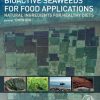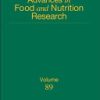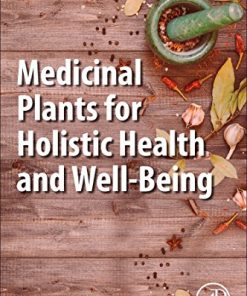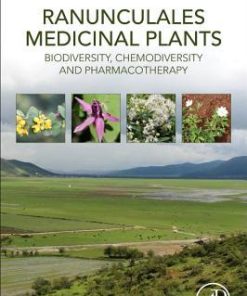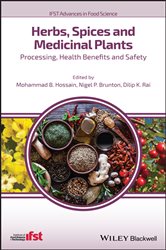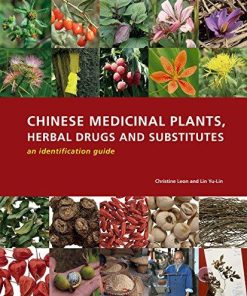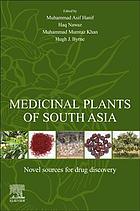Synthesis of Medicinal Agents from Plants 1st Edition by Ashish Tewari 0081022740 9780081022740
$50.00 Original price was: $50.00.$25.00Current price is: $25.00.
Synthesis of Medicinal Agents from Plants 1st Edition by Ashish Tewari – Ebook PDF Instant Download/DeliveryISBN: 0081022740, 9780081022740
Full download Synthesis of Medicinal Agents from Plants 1st Edition after payment.
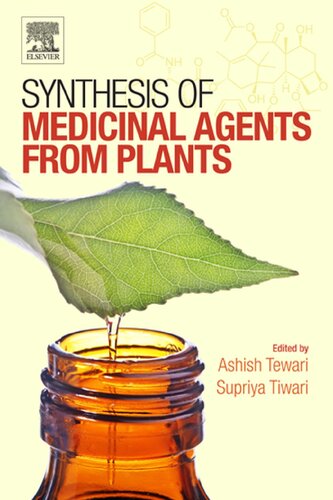
Product details:
ISBN-10 : 0081022740
ISBN-13 : 9780081022740
Author : Ashish Tewari
Synthesis of Medicinal Agents from Plants highlights the importance of synthesizing medicinal agents from plants and outlines methods for performing it effectively. Beginning with an introduction to the significance of medicinal plants, the book goes on to provide a historical overview of drug synthesis before exploring how this can be used to successfully replicate and adapt the active agents from natural sources. Chapters then explore the medicinal properties of a number of important plants, before concluding with a discussion of the future of drugs from medicinal plants. Illustrated with real-world examples, it is a practical resource for researchers in this field.
In an age of rapid environmental destruction, hundreds of medicinal plants are at risk of extinction from overexploitation and deforestation, limiting the natural resources available for active agent extraction, thereby threatening the discovery of future cures for diseases. Simultaneously, with the increasing population and advances in medical sciences, the demand for drugs is continuously increasing and cannot be met with just plants. The ability to synthetically replicate the active compounds from these plants is essential in creating an ecologically-aware, sustainable future for drug design
Synthesis of Medicinal Agents from Plants 1st Table of contents:
Chapter 1: Significance of medicinal plants in human life
Abstract
1.1. Historical Importance of Medicinal Plants in Human Society
1.2. Exploiting Medicinal Plants: Important Drugs Obtained
1.3. An Overview of Plant-Derived Drug Research
1.4. Promoting World Wide use of Medicinal Plants
1.5. Conservation of Medicinal Plants
Chapter 2: Drug synthesis from natural products: a historical overview and future perspective
Abstract
2.1. Introduction
2.2. Natural Products in Folklore as a Source of Medicine: A Historical Perspective
2.3. Role of Modern Science and Technological Innovations in the Development of Novel Drug Compounds
2.4. Conclusion
Conflict of Interest
Acknowledgments
Chapter 3: Substituting medicinal plants through drug synthesis
Abstract
3.1. Introduction
3.2. Important Constituents of Medicinal Plants
3.3. Loss of Biodiversity
3.4. Valuing the Biodiversity of Medicinal Plants
3.5. Conclusion
Chapter 4: Bioactive constituents of neem
Abstract
4.1. Neem Chemistry
4.2. Preparation of Neem Extract from Leaves
4.3. Extraction of the Secondary Metabolites from Flowers
4.4. Chemical Constituents of Neem
4.5. Synthesis of Azadirachtin A
4.6. Medicinal Use of Various Parts of Neem
4.7. Toxicity of Compounds of Neem and Its Extract
4.8. Conclusion
Chapter 5: Turmeric: isolation and synthesis of important biological molecules
Abstract
5.1. Introduction
5.2. Cultivation of Turmeric
5.3. Isolation of Important Bioactive Agents
5.4. Synthesis of Bioactive Compounds Isolated from Turmeric
5.5. Synthesis of Curcuminoids
5.6. Biological Activities of Turmeric
5.7. Conclusion
Acknowledgments
Chapter 6: Properties and important molecules of medicinal interest in wood apple (Aegle marmelos)
Abstract
6.1. Introduction
6.2. Botanical Description and Identification
6.3. Dietary Uses of Wood Apple
6.4. Nutritive Value of Wood Apple
6.5. Pharmacological Properties of Wood Apple
6.6. Medicinal Properties of Wood Apple
6.7. Phytochemicals Present in A. marmelos
6.8. Synthesis of Phytochemicals Obtained from A. marmelos
6.9. Conclusion
Acknowledgments
Chapter 7: Medicinally important constituents of tulsi (Ocimum spp.)
Abstract
7.1. Introduction
7.2. Isolation of Important Bioactive Agents
7.3. Synthesis of Important Derivatives of Isolated Bioactive Compounds
7.4. Biological Assay
7.5. Conclusions
Chapter 8: Biological importance of Aloe vera and its active constituents
Abstract
8.1. Introduction
8.2. Isolation of Important Bioactive Agents
8.3. Biological Activity
Chapter 9: Alkaloid group of Cinchona officinalis: structural, synthetic, and medicinal aspects
Abstract
9.1. Introduction
9.2. Isolation and Structure
9.3. Synthesis
9.4. Medicinal Applications
9.5. Conclusions
Chapter 10: Isolation of medicinally important constituents from rare and exotic medicinal plants
Abstract
10.1. Introduction
10.2. Adonis vernalis
10.3. Aesculus hippocastanum
10.4. Fraxinus rhynchophylla
10.5. Atropa belladonna
10.6. Berberis Vulgaris
10.7. Mucuna Pruriens
10.8. Hydrastis Canadensis (Goldenseal)
10.9. Taxus Brevifolia
Chapter 11: Medicinal properties of marine plants
Abstract
11.1. Introduction
11.2. Dysidea etheria de Laubenfels
11.3. Laurencia Obtusa
11.4. Aplidiopsis Confluata
11.5. Tunicate Didemnum sp.
11.6. Nostoc Linckia
11.7. Lyngbya Majuscule
Chapter 12: Ayurveda: A new dimension in the era of modern medicine
Abstract
12.1. Introduction and History of Ayurvedic Medicine
12.2. Principle of Ayurveda
12.3. Classification of Ayurvedic Medicine
12.4. Preparation of Ayurvedic Medicine
12.5. Commonly Found Household Ayurvedic Medicines
12.6. Summary
Chapter 13: Dual role of drugs: beneficial and harmful aspects
Abstract
13.1. Introduction
13.2. Why Drug Abuse?
13.3. Natural Sources of Drug Abuse
13.4. Amphetamines
13.5. Charas (Hashish)
13.6. Cocaine
13.7. Heroin
13.8. Lysergic Acid Diethylamide
13.9. Some Other Drugs
13.10. Conclusion
Chapter 14: Introduction to medicinally important constituent from chinese medicinal plants
Abstract
14.1. Introduction
14.2. Some Clinically Approved Bioactive Agents From Chinese Medicinal Plants
14.3. Some Chinese Medicinal Herbs in Early Clinical Studies
14.4. Conclusion
People also search for Synthesis of Medicinal Agents from Plants 1st:
how is medicine made from plants
how are drugs extracted from plants
synthesis of natural products
what medicine come from plants
synthesis of medicine
Tags: Synthesis, Medicinal Agents, Plants, Ashish Tewari, Plants highlights
You may also like…
Engineering
Medicinal Plants for Holistic Health and Well Being 1st Edition by Namrita Lall 9780128124765
Science (General)
Ranunculales Medicinal Plants: Biodiversity, Chemodiversity and Pharmacotherapy 1st edition
Biology and other natural sciences - Plants: Agriculture and Forestry
Medicine - Natural Medicine
Medicinal Plants in Asia and Pacific for Parasitic Infections Christophe Wiart
Chemistry - Organic Chemistry
Science (General)
Medicinal plants of South Asia : novel sources for drug discovery 1st edition Hanif
Engineering - Aerospace Engineering


